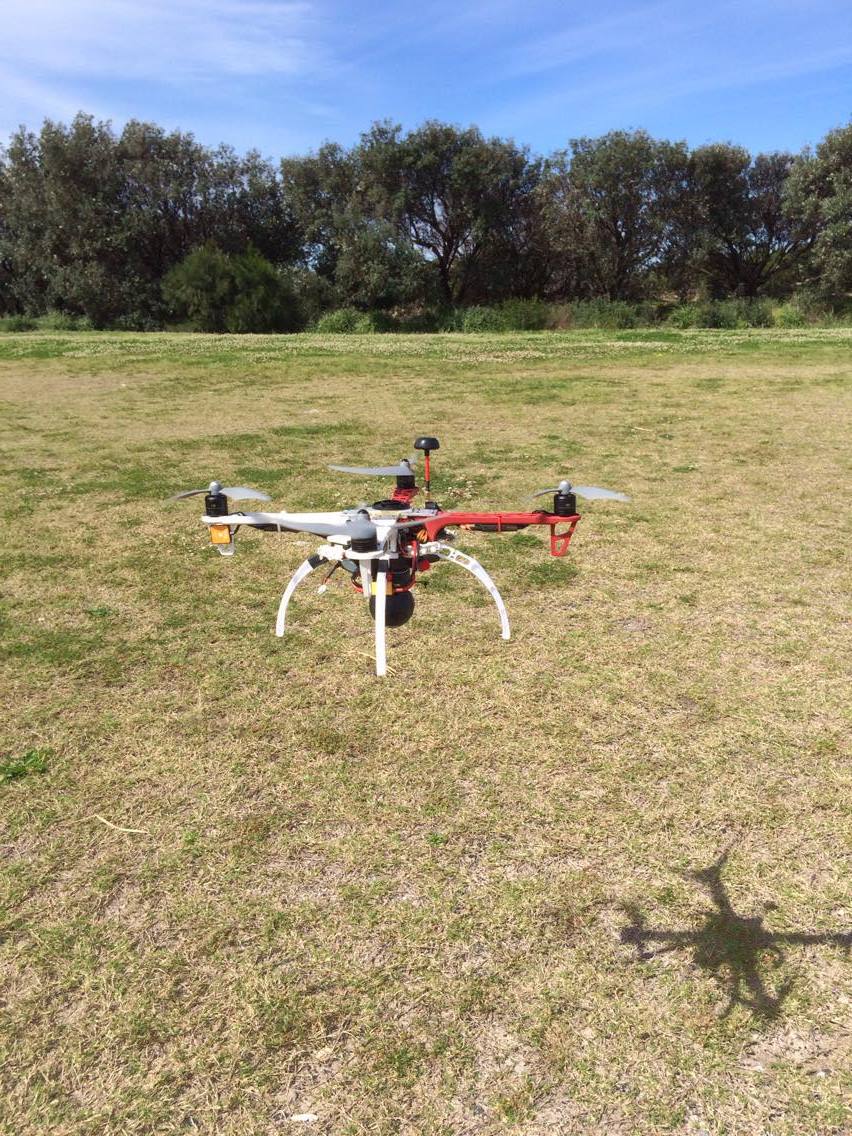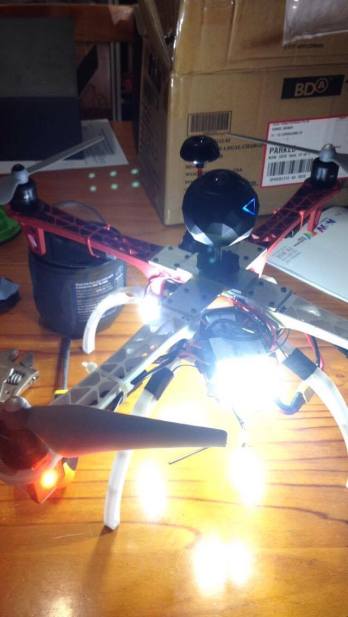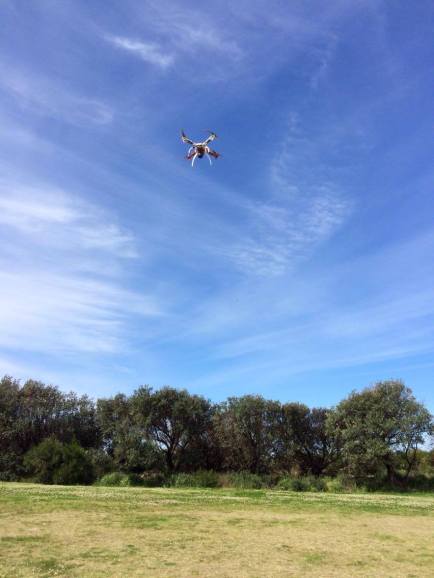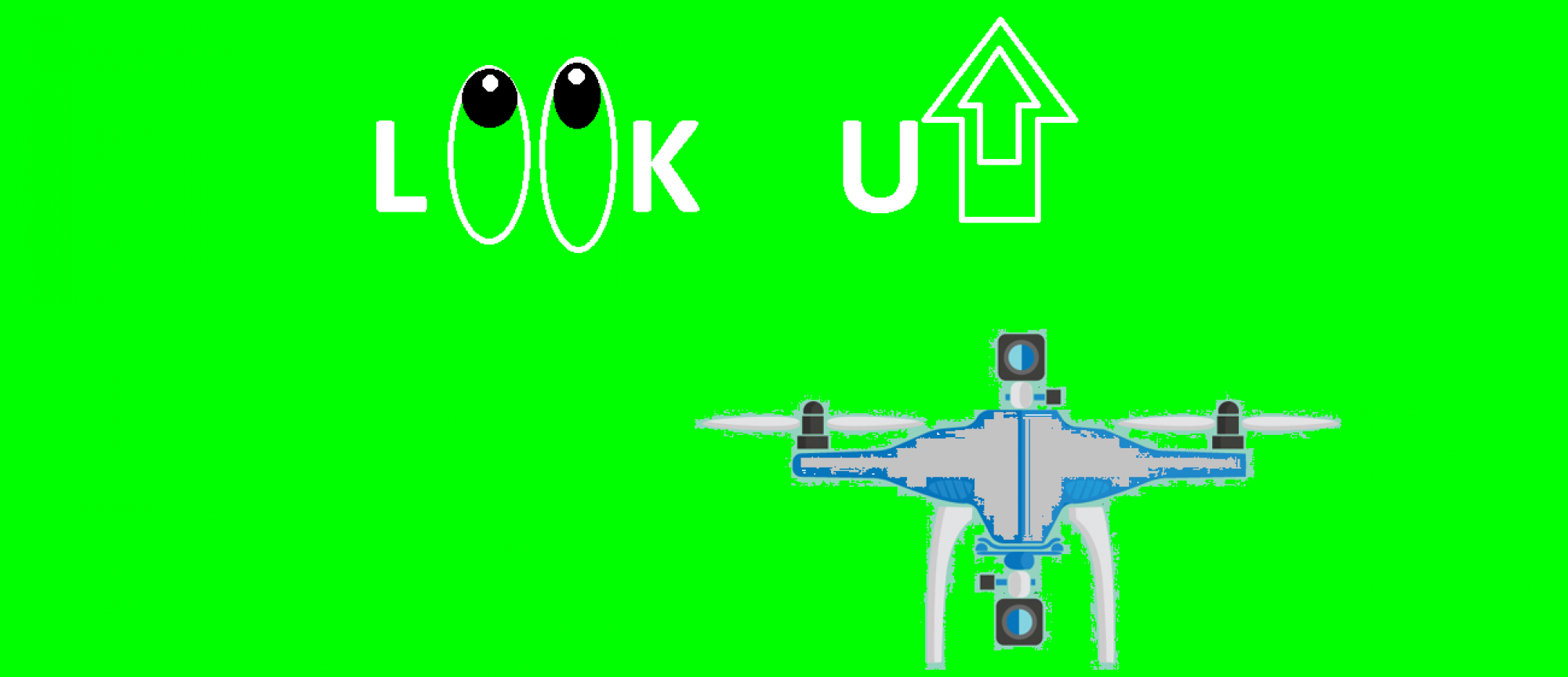Currently drones look down. They relay a view from an aircraft that looks vertically down past the propellers and usually have a camera on a gimbal with the ability to pan up and down and minor sideways movements. I have custom built from the ground up a drone which implements an external camera located on the top of the aircraft, replacing the traditional bottom placement. This allows a 270-degree vision angle looking vertically from the device.

My prototype has the camera capability to view 360 degrees which means, when linked with a smart device, like a tablet or phone, you can simply move the device to a desired viewpoint by a click and drag around the screen, with complete control. The camera can be linked to a smart phone and inserted into a Virtual Reality (or VR) Headset that allows viewing advantage simply by turning your head. Platforms such as YouTube and Facebook also support these for sharing online, which uses the same method on smart devices and a click and drag technique with the mouse when viewing on a PC.
As a part of the design of the drone, I’ve fitted LED lights around the exterior for added visions in darkened spaces
.
It also has a LIVE FEED first person view camera on the front for piloting assistance to an external monitor. This relays what the front of the drone sees if the drone was to become out of sight and needed to be traced.
 (http://www.riseabove.com.au/assets/full/FEEL-PVR733-FPV-MONITOR.jpg)
(http://www.riseabove.com.au/assets/full/FEEL-PVR733-FPV-MONITOR.jpg)
I’ve left out of this build sensory technology simply due to costs and the first intended usage not particularly needing a whole lot of piloting assistance. It’s something I am definitely going to add to the advancement and development of this prototype with future builds and even this one itself. However, what I don’t pack in GPS and smart phone connectivity I make up for in a revolutionary dual mount system.
Users can now choose whether they want videos of under the drone, above the drone or both. 360fly Director allows the footage from cameras that have been imported to the software to be merged that would ultimately mean if there were two cameras on each mount, then simple click and drag merging of the footage would give an edit of everything the drone could have captured whilst in the air, both looking up and down, all in 360 degree high definition video. A whole new product that is unseen and un-engineered in a commercial environment.

The 360fly camera I’ve chosen I would highly recommend to anyone new to 360degree video technology and has an interest in introducing themselves into Virtual Reality as it comes with a set of VR goggles fit for a smartphone. I’ve chosen the HD camera however there is also a 4K device available that obviously climbs in price but produces higher quality footage. The button on the camera acts as the one power switch as well as the record button, so capturing is very easy to navigate, with red (recording), blue (on) and green (charging). The smartphone linkage to this camera uses a wifi hotspot signal that creates a live feed in 360 to the connected device. It also has a cloud save setting that saves all the video content to the app as well as the device itself. The app also allows users to start and stop the recording via the phone, which is very convenient once attached to the drone.

The VR Goggles that are able to be claimed with the purchase of the camera from 360fly are a great introduction to the possibilities of 360 degree video playback on a smartphone. The device simply clamps in the phone and once switched to VR goggle mode on the chosen playback platform, users have the advantage of turning their head freely to view the space they desire.
Lastly the remote control I’ve collaborated is a DJI DT-7 RC Radio System. This is a universal controller usually found with the early Phantom ranger, however has the ability to link with my custom build, with, if desired, also be able to control a camera separate to the drone as well as switch between modes (GPS, sports mode). However, my drone doesn’t require these features. The controls are then all linked the same way as any commercial product, with added skill necessary to combat wind drift and general external factors.
Here’s 3 videos I’ve made using the ‘LookUp’. A day at a beach park, a skating video as well as the intended purpose of the top camera mount for a bridge inspection.

Reblogged this on T H I N K Sam.
LikeLike